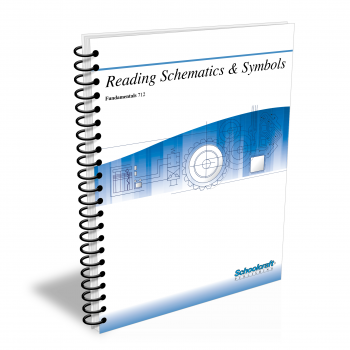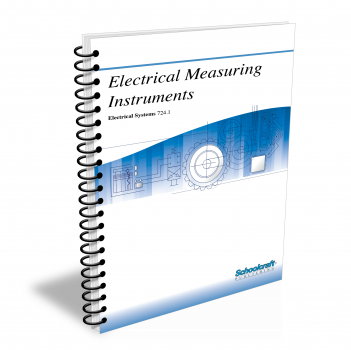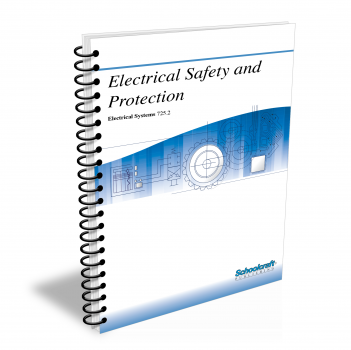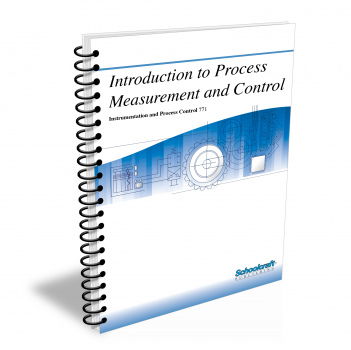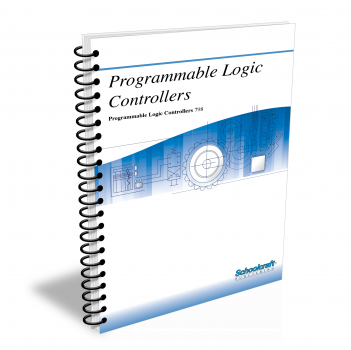Basic Electricity and Electronics
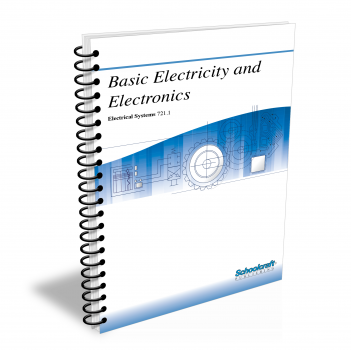
Course Number: 721.1
The Basic Electricity and Electronics textbook covers basic, non mathematical approach to understanding principles of electricity. Introduces electron theory, static electricity, electrons in motion, and magnetism. Covers basic methods of measuring current, voltage, and resistance. Explains circuit components-conductors, insulators, resistors, capacitors-and simple Ohm's Law calculations for DC and AC circuits.
Does your curriculum require additional topics not included in this textbook? Build a customized version of the Basic Electricity and Electronics textbook below.
This textbook has been recently updated
to include topics lists, objectives, & key terms for every chapter.
Recommended Contact Hours – 15
Preview a Chapter
Available Supporting Material
- Table of Contents
- Exam Copies
- Suggested Titles
Table of Contents
Chapter 1: Introduction to Electricity
Topics: Structure of matter and atoms; Electron shells; Transferring charges; Electrical forces and terms
Learning Objectives:
- Describe the structure of an atom.
- Tell the difference between a compound and an element.
- Explain how electrical forces cause objects to attract or repel other objects.
- Describe electron flow.
- State the definition of a cell.
Chapter 2: Static Electricity
Topics: Nature, effects, generation, and elimination of static electricity; Effects of humidity; Static charges on liquids, vehicles, dusts, process machinery
Learning Objectives:
- List the conditions that must exist in order for static electricity to cause ignition.
- List the common causes of static electricity in an industrial plant.
- State the definition of bonding.
- Explain how liquid affects a static charge.
- State the definition of grounding.
- Explain the relationship between humidity and static electricity.
Chapter 3: Current Electricity
Topics: Electric current and energy; Electricity from chemical action; Primary and secondary cells; Batteries; Electricity from electromagnetism
Learning Objectives:
- List the main methods of producing potential difference.
- State the main difference between a primary cell and a secondary cell.
- Explain how to connect cells in parallel and in series.
- Describe how a photoelectric device works.
- Identify potential hazards when recharging batteries.
Chapter 4: Magnetism
Topics: Magnetic forces; Theory of magnetism; Magnetic fields; Left-hand rules; Electromagnets; Industrial uses of magnets
Learning Objectives:
- State the most basic law of magnetic force.
- Describe how magnetic force operates.
- Describe the left-hand rule for magnetic field direction.
- Describe an electromagnet.
- Explain how to use lifting magnets, magnetic pulleys, and magnetic clocks.
Chapter 5: Current, Resistance, and Potential Difference
Topics: Current, Resistance, and Potential Difference - Electric current, resistance, and potential difference; Ohm's Law; Resistance and voltage drop; Electrical measurement
Learning Objectives:
- State the characteristics of an electrical conductor and an electrical insulator.
- State the definition of electric current.
- Explain the relationship of potential difference to the flow of electric current.
- State the definition of Ohm's Law.
- Identify the purpose and parts of an ammeter.
Chapter 6: Electrical Components
Topics: Resistors; Color code and power rating; Capacitors; Connecting capacitors; Induction; Inductors; Solenoids and relays
Learning Objectives:
- Identify symbols for resistors, capacitors, and relays in an electric circuit diagram.
- Explain the operating principles of resistors, capacitors, and inductors.
- State the meaning of each band in the resistor color-code system.
- List the factors to consider when choosing a resistor.
- Explain how to connect capacitors in parallel and in series.
Chapter 7: Conductors
Topics: Sizes and classifications; Insulation; Protecting conductors; Flexible conduit; Conduit fill; Splicing conductors
Learning Objectives:
- Explain the difference between a conductor and an insulator.
- Identify a bare conductor, a covered conductor, an insulated conductor, a stranded conductor, a cable, and a cord.
- State the definitions of insulation resistance and dielectric strength.
- Select the best tapes for insulating splices, restoring the outer protecting covering on a splice, and connecting motor leads.
- Explain how to make a pigtail splice and a fixture splice.
- State the purposes of cable protection.
Chapter 8: DC Circuits
Topics: DC characteristics; Ohm's Law; Circuit power; Series, parallel, series-parallel, open, and short circuits
Learning Objectives:
- State the difference between ac and dc.
- Solve for R, E, I, and P in a simple electrical problem.
- Solve for potential difference, current, and resistance in a series and parallel circuit.
Chapter 9: AC Circuits
Topics: Advantages of AC; Generating alternating current; Resistance, inductance, capacitance, current, and power in AC circuits
Learning Objectives:
- Explain the importance of the transformer in ac electricity.
- Explain what a complete cycle of ac consists of and how it is produced.
- State the definition of ac inductance.
- List the ways inductive reactance differs from resistance.
- Explain the difference between the terms in-phase and out-of-phase in an ac circuit.
Chapter 10: Electronics
Topics: Electron motion in a vacuum tube; Cathodes; Vacuum-tube diode and triode; Semiconductors;Transistors; Microprocessors
Learning Objectives:
- Name the parts of a vacuum tube, and describe the function of each part.
- Explain the difference between p-type semiconductor materials and n-type semiconductor material.
- List the parts of a transistor.
- State the definition of an integrated circuit.
Request Exam Copies
Exam Copies
Ready to see a copy of our textbooks? After selecting which textbooks you’d like to review for your course, you can submit your request by either logging in or creating an account so we know where to ship your exam copies. A representative from Schoolcraft will contact you to confirm and finish processing your request.
Exam copies are always free and yours to keep.
Selected Exam Copies
none selected
* Maximum of five copies can be ordered
